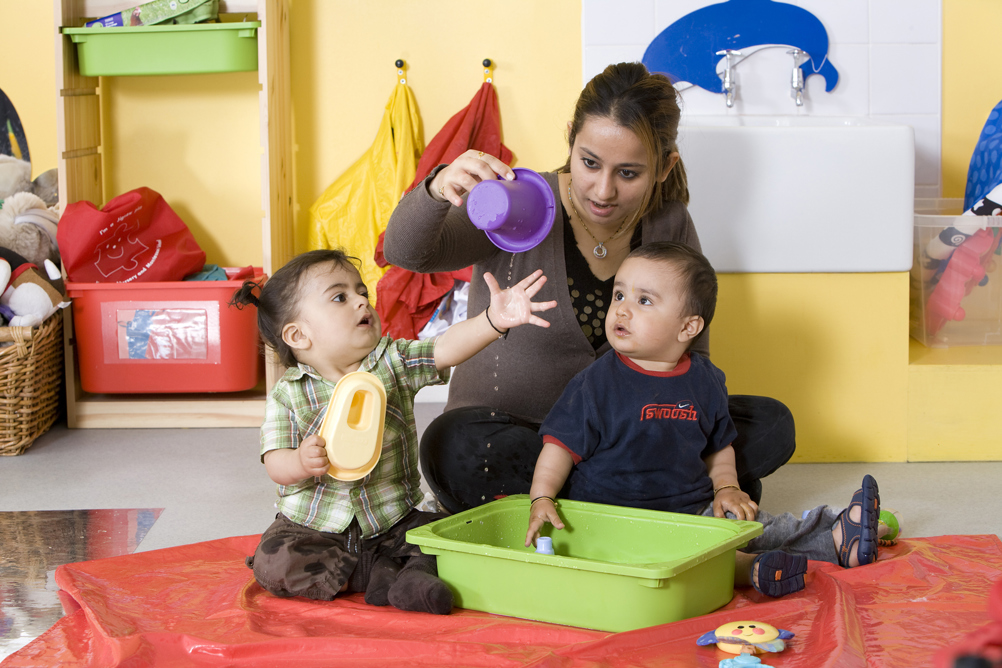
Findings from the DfE childcare consultation showed some nurseries do not make proper use of the staff-to-child ratios, and are using more staff than government regulations require.
By working closer to the ratios and having fewer members of staff per child, settings can improve on quality and decrease their costs by around 15 per cent, it concludes.
But early years organisations refuted the findings and said the quality of care could be affected by cutting staffing.
The report states: "Providers typically use more staff than government regulations require. They report, in part, that this is a quality measure, and that ‘slack’ is needed to enable them to cover peaks and troughs in demand. Where providers are operating with ‘slack’ in the system, they incur higher costs.
“Similarly, there are potential savings by changing the mix of staff used, within the limits of regulation. Potentially big savings are available using more variable staffing models to recognise peaks and troughs in occupancy. Increasing overall rates of occupancy improves efficiency for the same reasons.”
The report was published on the same day as the spending review, which revealed that there will be £300 million funding per year to increase the average hourly rate to providers to deliver the childcare expansion.
The ratios require a minimum one member of staff to eight children for three- and four-year-olds. This reduces to one staff member to four children for two-year-olds.
In 2013, DfE research found that more than half of parents think ratios where a teacher is present are too high.
Neil Leitch, chief executive of the Pre-school Learning Alliance, says providers choose not to work to ratios in the interests of the child.
“There is a good reason why, despite immense financial pressures, most providers choose not to work to the absolute minimum staff-to-child ratios and that's because it is not in the best interests of the children in their care.
"The DfE’s report acknowledges that providers works to higher than minimum ratios as a 'quality measure', while its own research shows that the majority of parents disagree with the current 1:13 minimum ratio for teacher-led settings. Given this, it's unclear why government is continuing to push on this point.
"Sacrificing quality to save money is not an option. The sector has made its views very clear on this point, and the government would do well to listen."
Liz Bayram, chief executive of Professional Association for Childcare and Early Years (Pacey), says: “We know from both our childminder and nursery members that rigid adherence to ratios is in reality challenging and we highlighted this throughout the funding review consultation.
"The review fails to understand that there are good reasons for the ‘slack’ it refers to. Settings have to ensure they have the correct number of qualified staff to cover, for instance, if staff go off sick, for annual leave or for staff’s professional development and training."
"Most important of all, settings must ensure children’s experience is high quality and that means consistency in a child’s relationship with their key person. This is also important for staff retention and satisfaction in their work, given the low pay most practitioners earn.
"With the sector struggling to recruit staff, this proposal fails to understand the reality all settings, especially smaller settings, struggle with every day.”
Beatrice Merrick, chief executive at Early Education, says that working to ratios all year round is not realistic.
“We know early years provision will never operate at full capacity year round, or even over a week.
“Creating flexible staffing arrangements through short-term contracts or casualisation is rarely compatible with retaining skilled and experienced staff and providing the vital continuity young children need."
Register Now to Continue Reading
Thank you for visiting Children & Young People Now and making use of our archive of more than 60,000 expert features, topics hubs, case studies and policy updates. Why not register today and enjoy the following great benefits:
What's Included
-
Free access to 4 subscriber-only articles per month
-
Email newsletter providing advice and guidance across the sector
Already have an account? Sign in here

